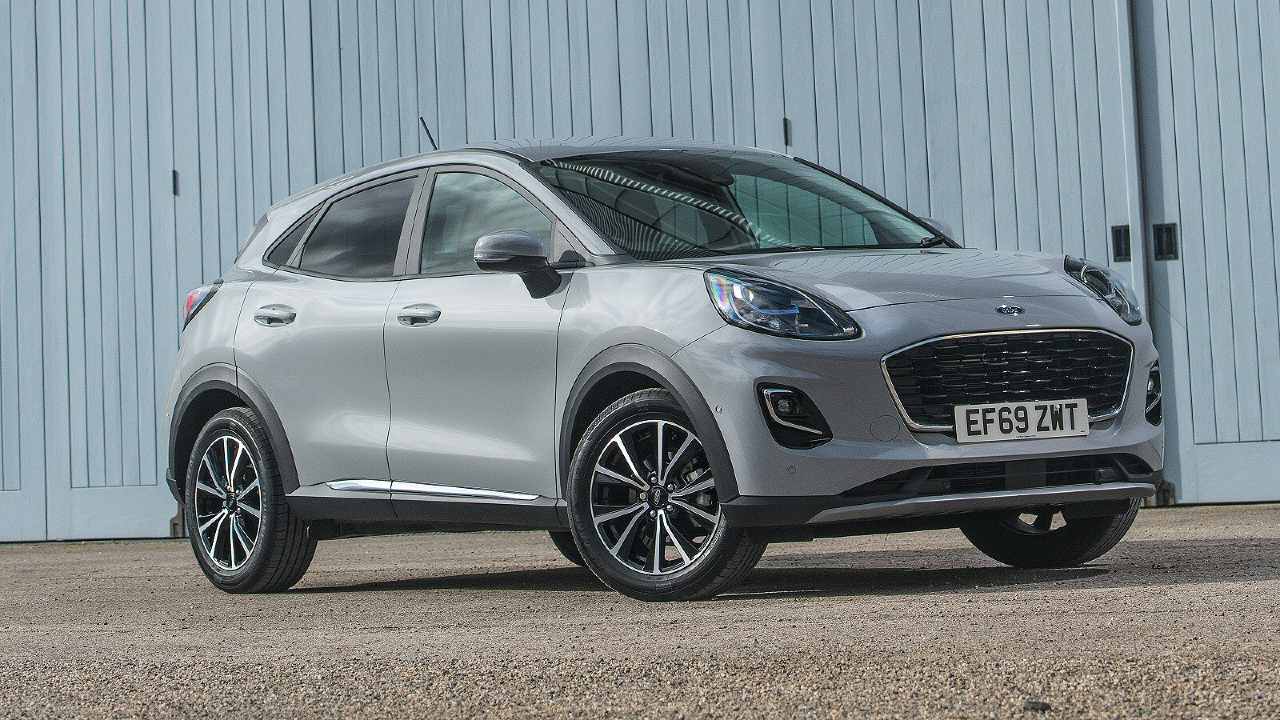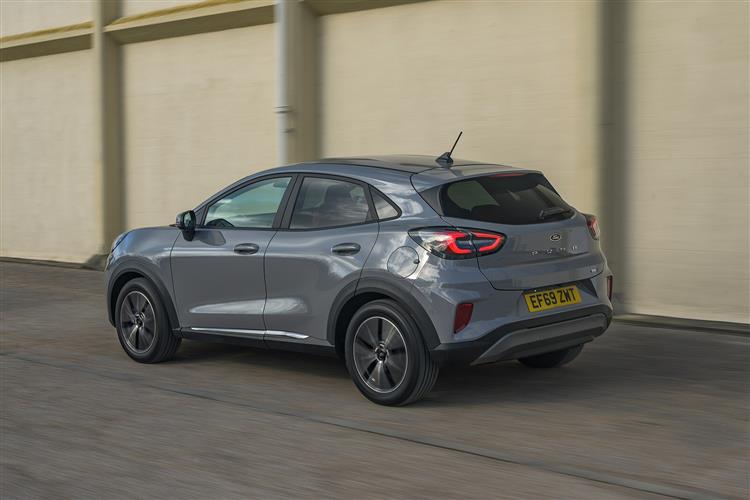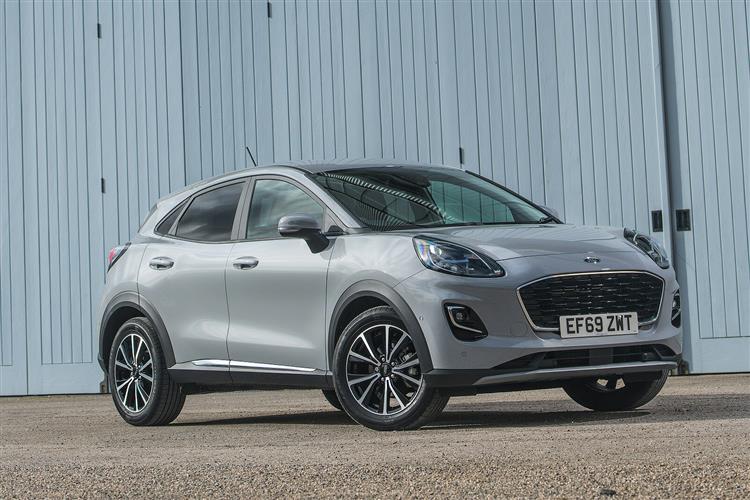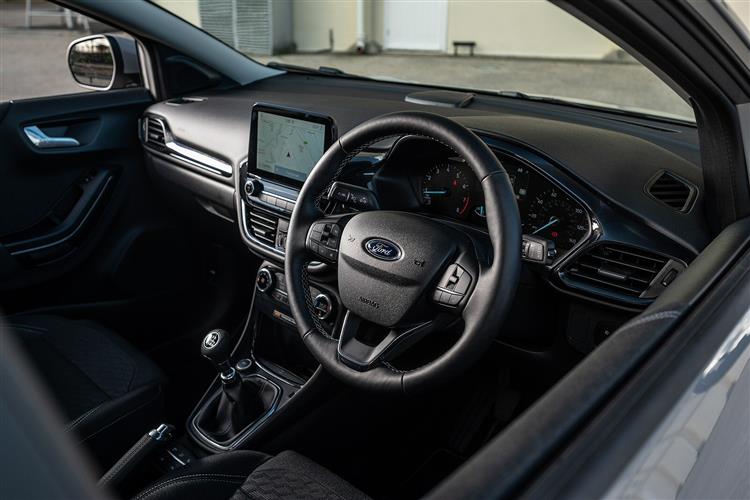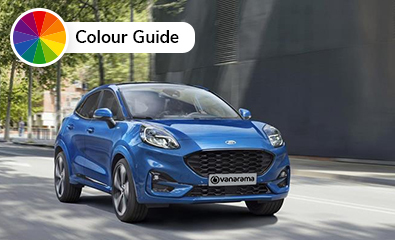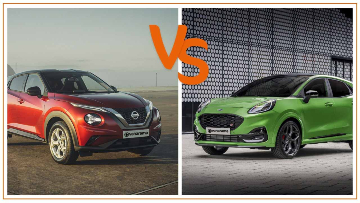By Mark Nichol
Ford calling this the “Puma” is about as controversial as giving one car the name of another, older car will ever be. Why? Because the original Ford Puma is something of a cult classic, a re-skinned and re-engineered Ford Fiesta produced between 1997 and 2002 that quickly established a reputation as one of the best affordable driver’s cars ever made. This Puma, though – also a re-skinned and re-engineered Fiesta, technically – is a compact crossover SUV. Gulp.
Nothing wrong with a compact crossover, obviously, but they’re not made for fun, right? And so, Ford calling this Puma felt like Nintendo releasing a tumble drier and calling it “Wii Dry”.
What’s Good About It?
And yet, imagine if Nintendo did do that, and we discovered that not only did Wii Dry have a massive drum, capable of doing a week’s worth of clothes in one go, but it also made doing the job as much fun as eating cheese directly from the fridge on Boxing Day. We’ve taken this metaphor too far now, probably.
It also has the crossover segment’s best boot, not only large by volume but also including a box under the floor of substantial size and which is waterproof, including a drainage hole. You can stick your dirty wellies in there without running the boot floor, or give your dog or baby an actual bath.
What Could Be Better?
The boot box, called the ‘Megabox’ if you’re asking, precludes the Puma from having a spare wheel, which means that if you’re against the idea of a tyre repair kit (which some people genuinely are) you might be a little vexed. The Puma is also a bit on the smaller side when it comes to rear seat space, even for a compact crossover, meaning it might be a little tight for those who after a standalone family car. Its generally ‘dynamic’ character also means it isn’t the most comfortable in the segment especially at town speed, where it can feel a little crashy.
What’s The Puma Like To Drive?
Brilliant. Truly. No caveats. That makes the Puma the only small crossover that you can actually say is enjoyable to steer without adding “…for a little SUV” to the end of the statement. It’s every bit as engaging as the Fiesta on which it’s based, which is a remarkable achievement on Ford’s part given that the centre of gravity is so much higher. You could argue, even, that it’s a slightly better drive than the Fiesta – the class leading supermini, remember – because its tall driving position means visibility is improved.
Still, you don’t sit ‘on top’ of a Puma. It’s a car that really sinks the driver down into the cabin while offering a wide range of adjustment for the seat and wheel, giving it the feel of a much bigger car and making sure that most will get comfy.
The steering is really light at low speed, which is what you want from a town car like this, but then it gives you more weight and feel the quicker you go. That’s a really clever trick. It generally has that excitable feel that you want from a small hatchback: it changes direction really quickly, there’s lots of grip, it feels light at the front end, there’s a lovely smoothness to the gearchange, perfect pedal placement, and non-cramped driving position. All good.
Plus, Ford’s 3-cylinder Ecoboost petrol engine – the Puma’s standalone choice, in two power outputs – sounds terrific. It has a real bark, and the way it puts its power down adds to the fun. It feels like a big turbo engine, as in it’s slightly uncouth and has a big lump of torque in the midrange, but that just adds to the character of the car. The 155hp version is a little more manic, while the 125hp model is a little smoother because its torque peak is a little lower.
There’s a little more tyre noise than you might want in general, but overall you’d say this was a quiet and well damped car, especially in engine noise terms – the three-cylinder unit settles down into a minor hum of background noise.
How Practical Is It?
Again, while it doesn’t have the biggest cabin (and as an aside, if you spec a sunroof it really does eat into headroom quite a lot, which is worth thinking about if you’re taller), the Puma has evidently been very carefully considered. Mostly behind the rear seats. It’s enough for most owners that a compact crossover has a naturally high boot floor (closer to waist height and therefore easier to load and unload) and a gaping hatchback, but the Puma’s boot takes things so much further.
The parcel shelf lifts with the tailgate, meaning it’s out of the way when loading bigger stuff. The floor is twin level, but there’s a mechanism so that at its lower setting it will lift slightly when the seats are dropped, creating a smooth loading bay.
Then there’s the Megabox, of course, which is 80 litres large and contributes to a 468-litre space, rising to a 1161-litre total. By comparison, a Nissan Juke has a 345-litre space and a Citroen C3 Aircross 410 litres. That said, the Citroen feels like a more capacious car in general – especially in rear seat terms – and will serve you better if it’s practicality you’re mainly looking for. The Puma seats five, albeit whoever is wearing the rear middle seatbelt will feel hard done by.
How Much Will It Cost Me?
Being Fiesta-based means that this isn’t a particularly costly car, which coupled with the high amount of standard equipment makes it a very attractive lease.
Base cars, called Titanium, come with 17-inch wheels, climate control, touchscreen infotainment, wireless phone charging, rear parking sensors and loads of safety kit, while ST Line models have a sportier look, mainly down to a body kit and specific wheel designs.
ST-Line X versions get bigger wheels – 18 inches, no less – and, more significantly, a B&O sound system to replace the fairly lacklustre standard setup. Definitely worth the additional outlay if you can.
You can also choose your Puma from a selection of 9 paint colours, of varying type, read our Puma colour guide for the full details on what you can customise.
With a manual gearbox, fuel economy from the 1.0-litre EcoBoost engine is officially pegged at 50.4mpg using the WLTP average measurement, and that’s regardless of whether you go for 125hp or 155hp version, while 126g/km CO2 makes it relatively tax-efficient, putting it in the £175 first year rate (£150 thereafter). Insurance rates are decent too, with most versions sitting between groups 15 and 20.
Any Puma with a manual gearbox will have a 48v Mild Hybrid system (the automatic version doesn’t), which is basically a beefier starter motor that improves fuel economy by occasionally assisting the engine. It might be badged ‘hybrid’ but don’t be fooled, this is no Toyota Prius.
Anything Else I Should Know?
Firstly, and most importantly, this is a very safe car because it’s not only a fundamentally solid chassis but it comes with loads of safety features as standard, including lane departure warning and automatic emergency braking. It was rated five stars by Euro NCAP in 2019 including very good 94% and 84% ratings for adult occupants and child occupants respectively.
Secondly, the Puma here is one of the very few compact crossovers to get a proper hot hatch version in the form of the ST – not to be confused with ST Line versions of the standard car. The Puma ST proper has 200hp from a 1.5-litre turbo petrol engine and has been comprehensively dynamically overhauled (from a very good starting point as it was) into something that would feel at home on a race track.
The steering system has been quickened, the suspension stiffened up and the tyres replaced for stickier ones, while aesthetic upgrades include a full body kit, Recaro seats and Kermit-spec paintjob called Mean Green. It’s outstanding.
What Alternatives Should I Look At?
Citroen C3 Aircross Leasing
Airy ride quality and a bigger feeling cabin make the C3 the better compact crossover for family duties.
Nissan Juke Leasing
The second-generation Nissan Juke feels higher quality and looks sharper than the Puma. Check out our head to head article to see how the Juke compares to the Puma in detail.
SEAT Arona Leasing
Pure Volkswagen Group sensibility and ergonomics meet Ibiza-based styling flair in the Arona.
The Vanarama Verdict: 10/10
"What we’re saying is that the Puma is far, far more dynamic and fun to drive than any small crossover has any right to be."
3 Things To Remember About The Ford Puma:
-
It’s an absolute hoot to drive, the best compact crossover in that regard.
-
The boot is sensational, especially the waterproof Megabox under the floor.
-
The EcoBoost engine sounds great and will give you 40-45mpg in real life.
For more articles, you can check out our car features and guides section. Or if you're looking for a brand new vehicle, we've got a huge range of cars to lease at unbeatable prices.

